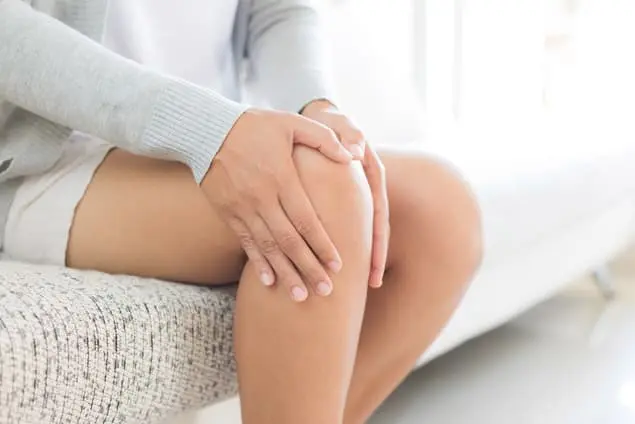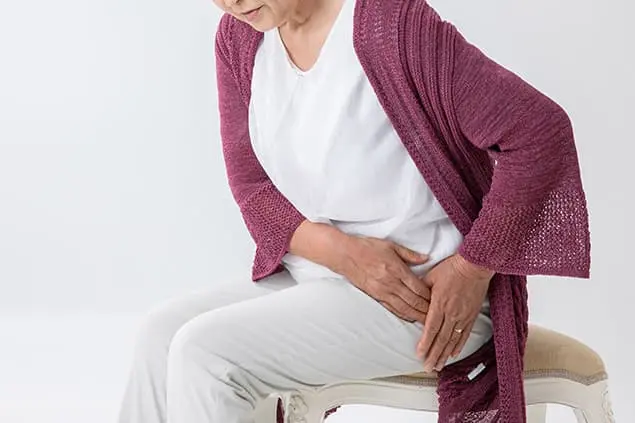
Back Pain Treatment Singapore
Back pain might knock you down but 90% of people rise above it – With the right treatment and proper care.
Let’s take a step towards your active and pain-free life.
We help you start at your own pace with our easy-to-follow home techniques. And if you need rapid relief, Our specialized orthopaedic surgeons are here to help.
Our Approach to Back Pain!
“We Treat The Cause, Not Just The Symptoms”
80% of Singaporeans face back pain, at some point in their lives. But it doesn’t have to control your life. We help you rise above the ache, with personalized treatments, advanced medical knowledge, evidence-based techniques and lifestyle adjustments.
Our Diagnosis and Treatment procedures are reliable and affordable:
Early Consultation – It begins with an in-depth discussion with our orthopaedic specialists in a comforting environment, laying the groundwork for effective treatment.
Non-surgical Solutions – We advocate for conservative measures like rest, ice/heat applications, and safe pain management. Our physiotherapy sessions focus on building strength and flexibility, while alternative therapies like acupuncture and yoga are recommended based on solid evidence.
Surgical Interventions – When necessary, we explore surgical options, chosen and executed with utmost precision.
Rehabilitation Care – A vital component of our treatment plan, rehabilitation care is tailored to aid recovery post-treatment, whether non-surgical or surgical. This phase is crucial for restoring function, minimizing pain recurrence, and ensuring a return to daily activities with confidence and ease.
Back Pain Relief Guide
This is the free guide for you to adopt a back-friendly lifestyle, from correct posture to stress management and sleep hygiene, vital in mitigating pain.


Overview of Back Pain
Back pain is a prevalent condition encountered in clinical practice. It can arise from various etiological factors including mechanical, degenerative, and neuropathic origins. Mechanical back pain often results from spinal misalignment, muscle strain, or ligament sprain. Degenerative changes such as disc degeneration and osteoarthritis contribute significantly to chronic back pain. Neuropathic pain, stemming from nerve compression or damage, is exemplified by conditions like sciatica.
Understanding Back Pain
Understanding back pain, a common yet complex condition is vital in seeking the right treatment. Know about the type of back pain you are suffering with from the locations and symptoms;
Types of Back Pain
Acute Back Pain
- Duration: Short-term, typically lasting from a few days to a few weeks.
- Cause: Often results from a specific incident like a fall, injury, or heavy lifting.
- Symptoms: Sharp, sudden pain that is usually localized.
Chronic Back Pain
- Duration: Persists for more than three months.
- Cause: Can be due to ongoing conditions such as arthritis, or unresolved acute injuries.
- Symptoms: Persistent, dull ache or intermittent sharp pains.
Neuropathic Back Pain
- Cause: Result of nerve damage or nerve dysfunction.
- Symptoms: Burning, shooting pain often accompanied by tingling or numbness.
Specific Conditions
Sciatica
- Location: Pain radiating along the sciatic nerve, from the lower back down to the legs.
- Symptoms: Sharp, burning sensation, or excruciating pain, usually on one side of the body.
Osteoarthritis
- Location: Commonly affects the lower back.
- Symptoms: Stiffness, particularly in the morning, and pain during movement.
Herniated Disc
- Location: Can occur in any part of the spine but is most common in the lower back.
- Symptoms: Numbness, tingling, radiating pain, especially when pressing on the nerve.
Muscle Strain
- Location: Typically in the lower back.
- Symptoms: Sudden onset of pain, tenderness, limited range of motion.
Common Locations and Associated Symptoms
Lower Back (Lumbar Region)
- Conditions: Muscle strain, herniated discs, sciatica, spinal stenosis.
- Symptoms: Dull aches, sharp pain during movement, stiffness, muscle spasms.
Middle Back (Thoracic Region)
- Conditions: Muscle strain, herniated discs, osteoarthritis.
- Symptoms: General discomfort, sharp pains, limited flexibility.
Upper Back (Cervical Region)
- Conditions: Neck strain, cervical osteoarthritis, disc degeneration.
- Symptoms: Stiff neck, pain when tilting or turning the head, headaches.
Understanding your back pain is our priority, guiding you towards a path of relief and recovery. With our expert team and advanced techniques, we are committed to helping you regain your best quality of life.
Our Clinic
Address
38 Irrawaddy Road,
Mount Elizabeth Novena Specialist Centre,
#09-21/38, Singapore 329563
Opening Hours
Monday to Friday: 9 am to 5 pm
Saturday: 9am to 1pm
Closed on Sundays and Public Holidays
Home Techniques and Exercises for Back Pain Relief
Here are simple yet impactful techniques and exercises you can do in the comfort of your home to prevent your back.
Gentle Stretching
Start your day with some gentle stretches to ease stiffness and improve flexibility. Focus on slow, controlled movements that elongate the back muscles without causing strain.
- Cat-Cow Stretch: On your hands and knees, alternate between arching your back upwards and dipping it downwards.
- Child’s Pose: Sit back on your heels with your arms extended forward to stretch the back gently.
Stretches are effective in avoiding any kind of pain during your activity ; Back Pain After Dead Hang
Strengthening Exercises
Strengthening your core and back muscles is key to providing better support for your spine.
- Pelvic Tilts: Lie on your back with knees bent, and gently arch your lower back, pressing it into the floor.
- Bridges: Lying on your back with knees bent, lift your hips towards the ceiling, hold, and then lower back down.
Particularly if you want to avoid lower back pain when walking
Low-Impact Aerobic Activities
Incorporate low-impact aerobic exercises like walking or swimming into your routine. These activities increase blood flow to the back area, promoting healing and reducing stiffness.
Proper Posture Techniques
Mindful posture is crucial, especially for those spending long hours at a desk.
- Ergonomic Seating: Ensure your chair supports your lower back, and your feet are flat on the floor.
- Regular Breaks: Stand and stretch every 30 minutes to reduce the strain on your back.
Relaxation and Mindfulness
Stress can exacerbate back pain. Practice relaxation techniques such as deep breathing or meditation to help reduce tension in your back muscles.
Heat and Cold Therapy
Applying heat pads can relax tight muscles and improve blood flow, while cold packs can reduce inflammation and numb pain. It also gives relief of lower back pain
Safety Tips
- Always warm up before exercising.
- If you experience pain, stop immediately.
- Consult with your healthcare provider before starting any new exercise regimen.
Remember, these home techniques are part of a holistic approach to managing back pain. Regular practice, combined with professional medical advice, can significantly improve your back health.
If you want us to assist you, we assure you that at Hip&KneeOrthopaedics, your journey to a pain-free back is our commitment.
Prevention Strategies for Back Pain
We always suggest prevention over treatment and for that, you need to take care of your body. Back pain, while common, can often be avoided with the right lifestyle choices and habits. Here are some tips on how to keep your back healthy and pain-free.
Maintain a Healthy Weight
Excess weight can put undue strain on your back. Maintaining a healthy weight through balanced nutrition and regular exercise is key to reducing this pressure.
Correct Posture
Good posture is not just about standing tall; it’s about protecting your spine both when you’re sitting and standing.
- While Sitting: Choose a chair with good lower back support. Keep your feet flat on the floor and avoid crossing your legs.
- While Standing: Keep your weight balanced on both feet and avoid slouching.
Ergonomic Workspaces
If you spend long hours at a desk, ensure your workspace is back-friendly.
- Desk Setup: Monitor at eye level, chair supporting the curve of your back, and keyboard within easy reach.
- Take Regular Breaks: Stand, stretch, or walk for a few minutes every hour.
Proper Lifting Techniques
Lifting objects incorrectly can lead to back injuries.
- Safe Lifting: Bend your knees and keep your back straight. Lift with your legs, not your back.
- Avoid Overreaching: Don’t stretch too far to pick something up. Move closer to the object.
Stress Management
Chronic stress can lead to muscle tension in the back. Find stress-relief practices that work for you, like mindfulness, meditation, or hobbies that relax you.
Avoid Smoking
Smoking can impair blood flow, leading to nutrient and oxygen deprivation in spinal tissues, and exacerbating back pain.
Regular Health Check-Ups
Regular visits to your healthcare provider can help catch any potential issues early.
Preventing back pain is about making conscious choices every day. At Hip&KneeOrthopaedics, we’re dedicated to guiding you through these choices, helping you lead a back-friendly lifestyle for long-term health and comfort.
Read from Our Blog
Our doctors share their journeys as orthopaedic surgeons as well as offer insights and tips.




